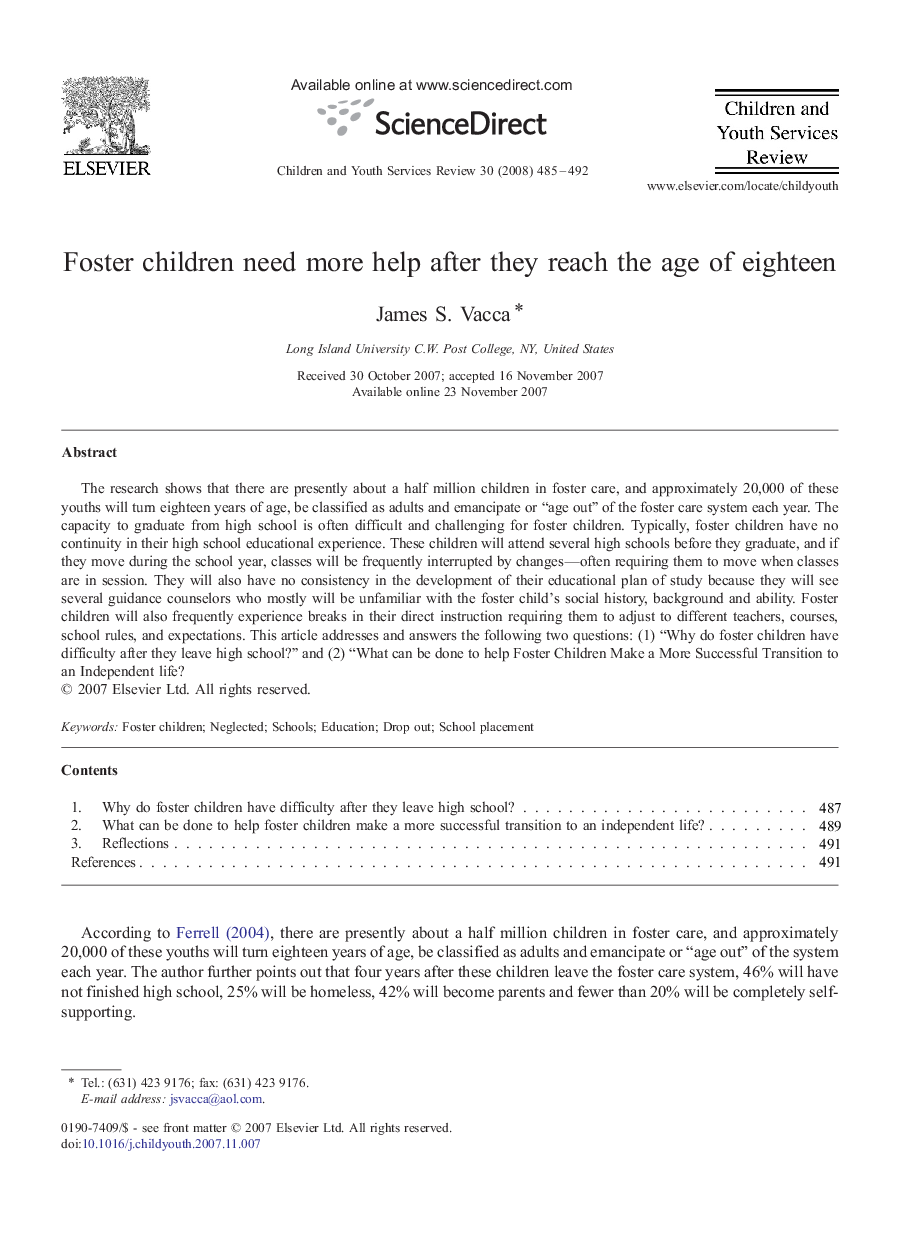| Article ID | Journal | Published Year | Pages | File Type |
|---|---|---|---|---|
| 347581 | Children and Youth Services Review | 2008 | 8 Pages |
The research shows that there are presently about a half million children in foster care, and approximately 20,000 of these youths will turn eighteen years of age, be classified as adults and emancipate or “age out” of the foster care system each year. The capacity to graduate from high school is often difficult and challenging for foster children. Typically, foster children have no continuity in their high school educational experience. These children will attend several high schools before they graduate, and if they move during the school year, classes will be frequently interrupted by changes—often requiring them to move when classes are in session. They will also have no consistency in the development of their educational plan of study because they will see several guidance counselors who mostly will be unfamiliar with the foster child's social history, background and ability. Foster children will also frequently experience breaks in their direct instruction requiring them to adjust to different teachers, courses, school rules, and expectations. This article addresses and answers the following two questions: (1) “Why do foster children have difficulty after they leave high school?” and (2) “What can be done to help Foster Children Make a More Successful Transition to an Independent life?
